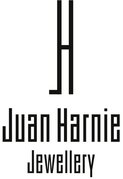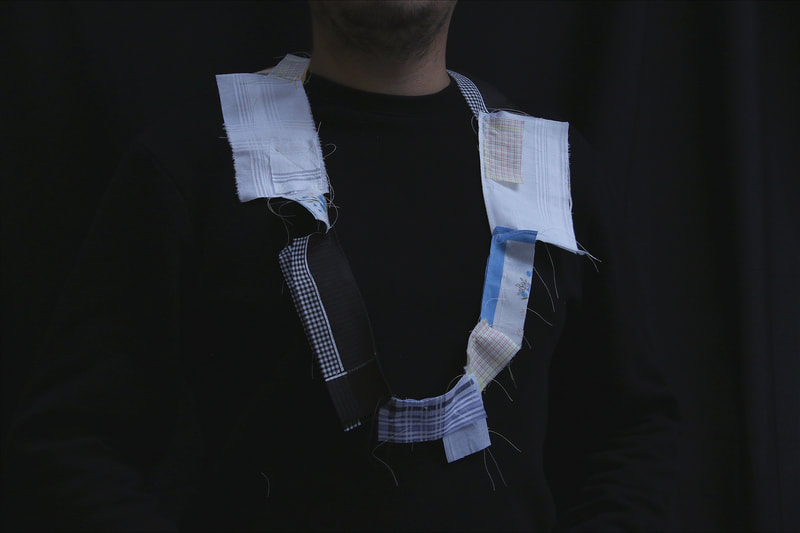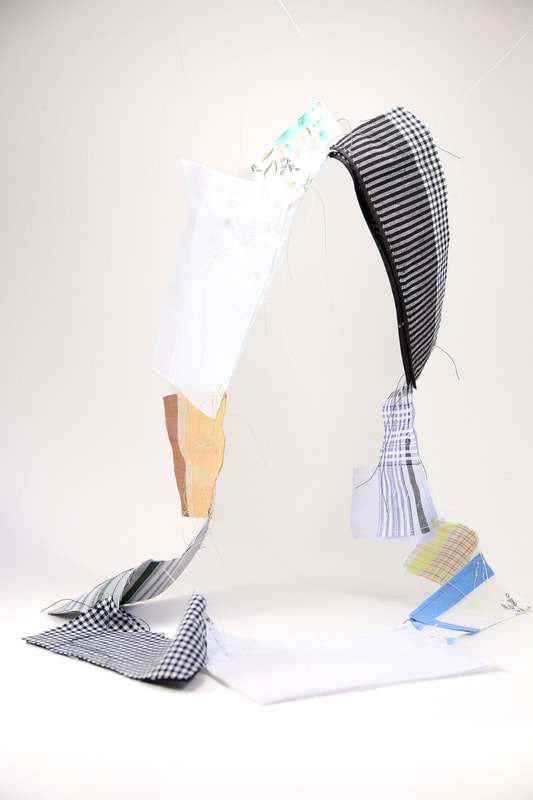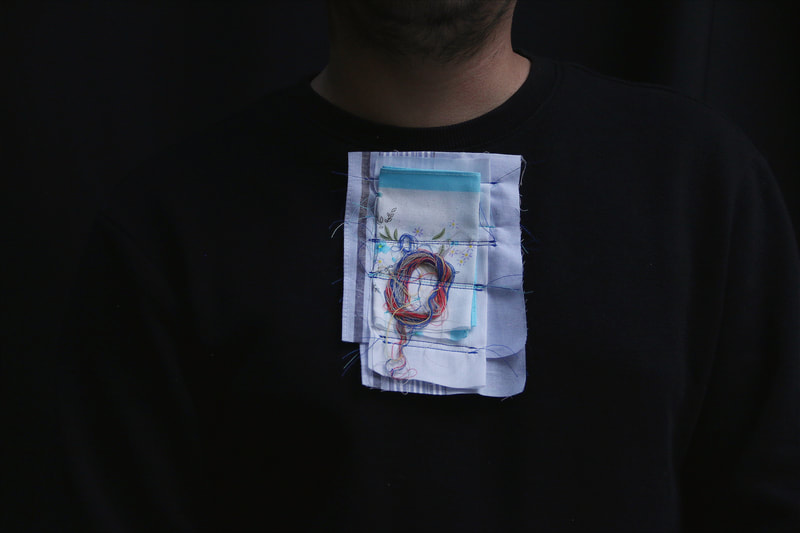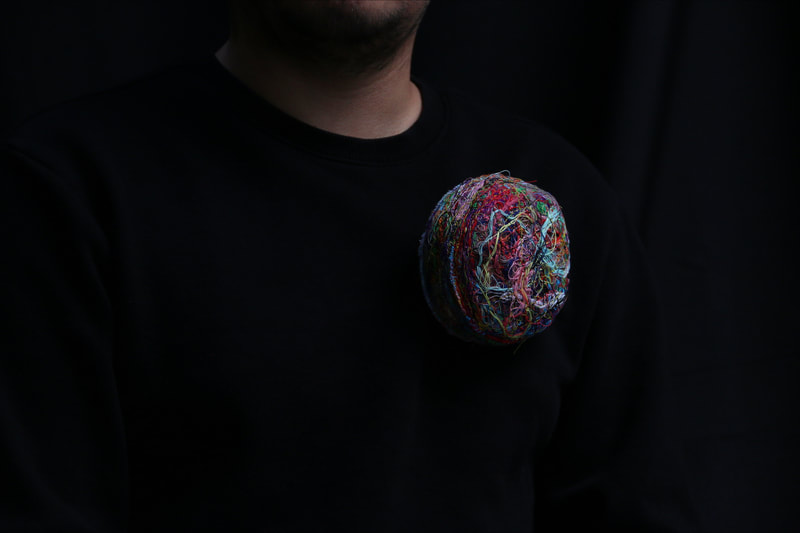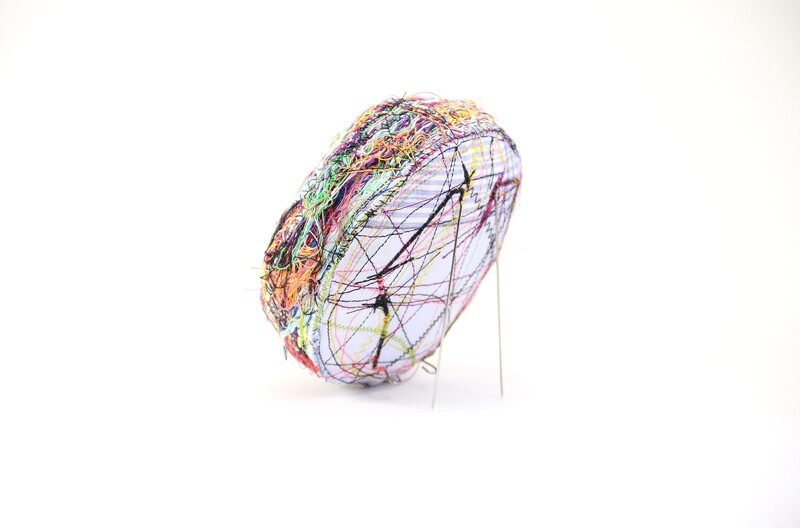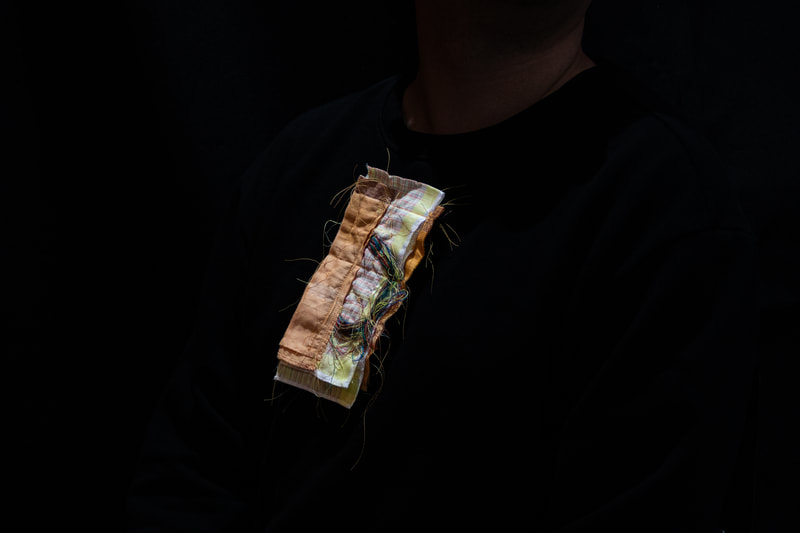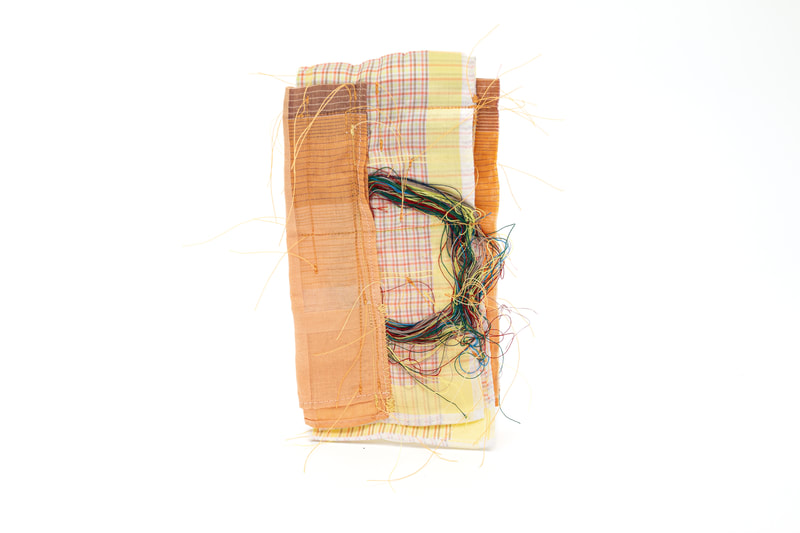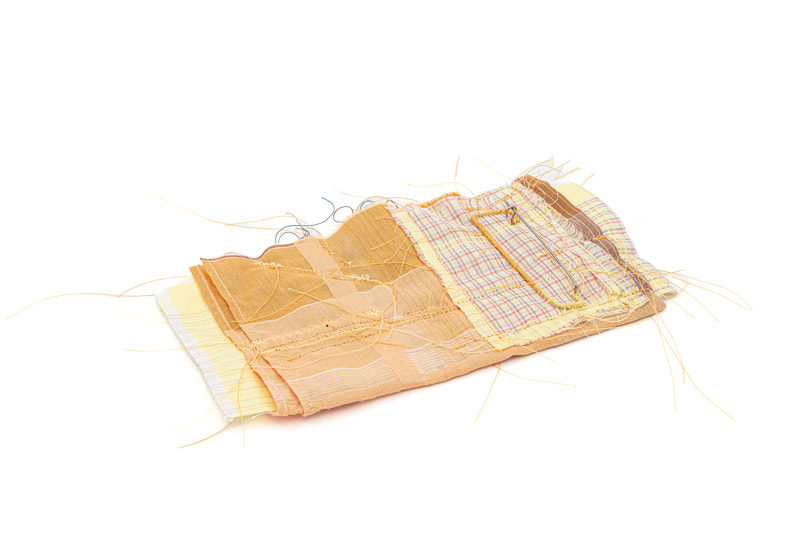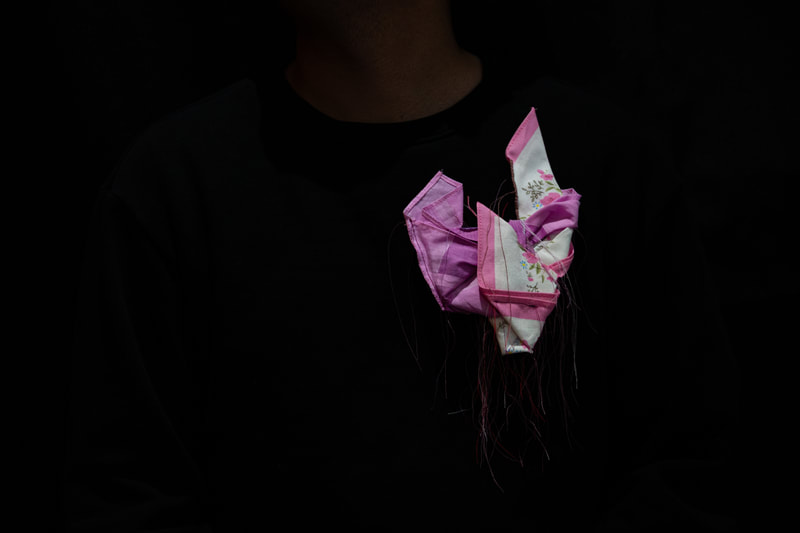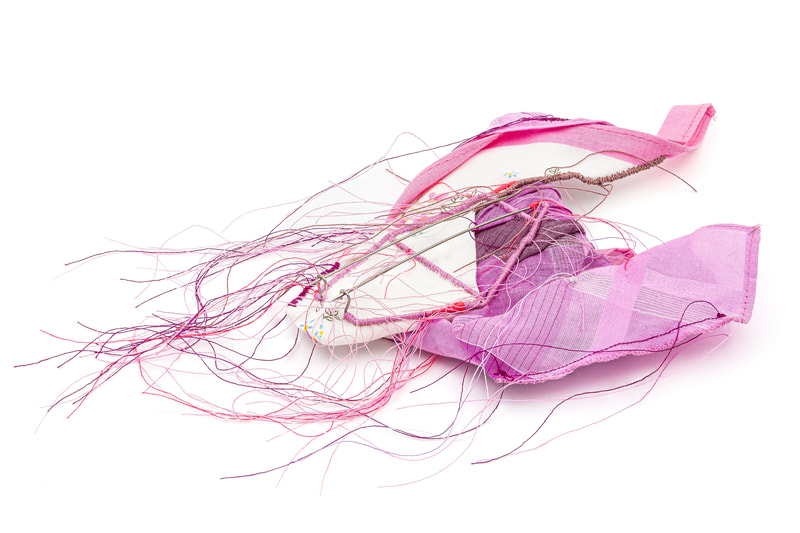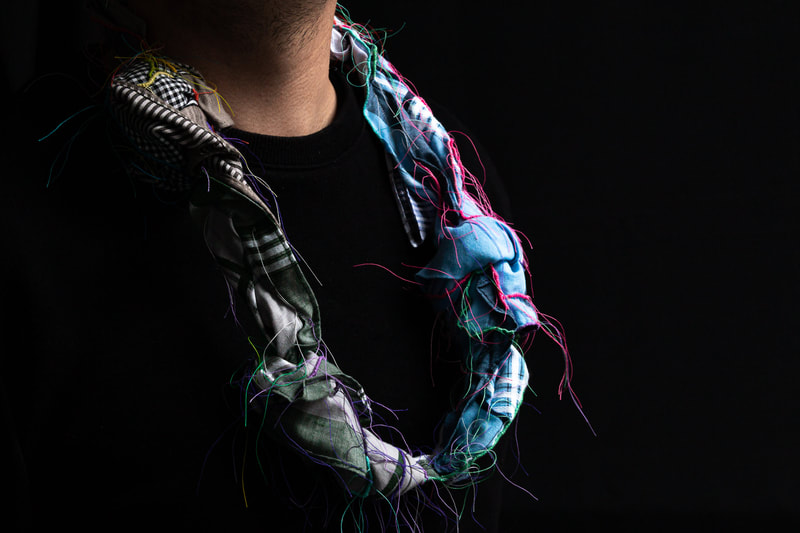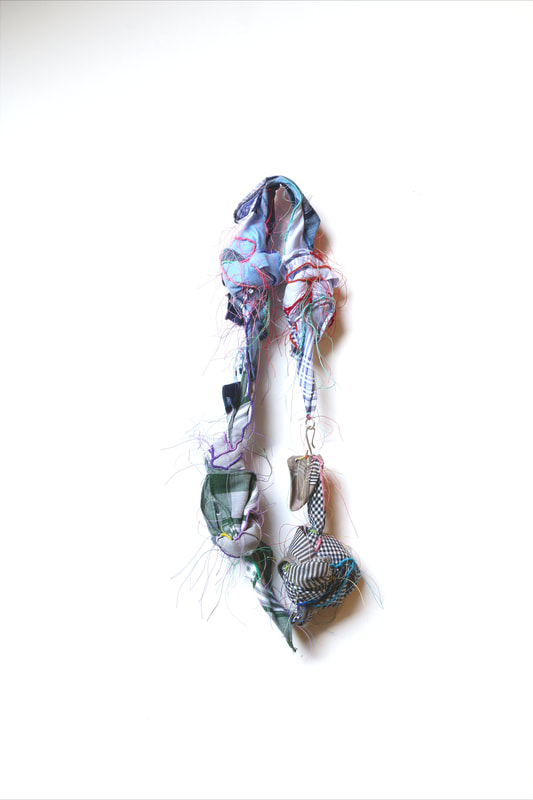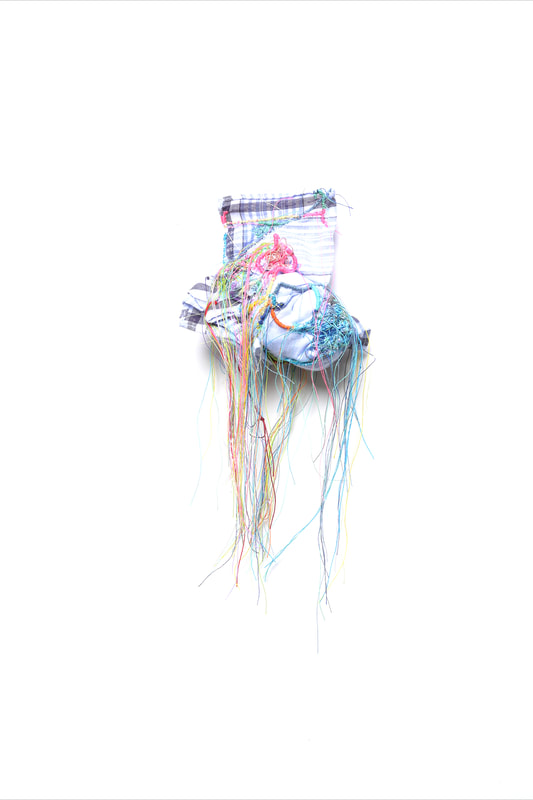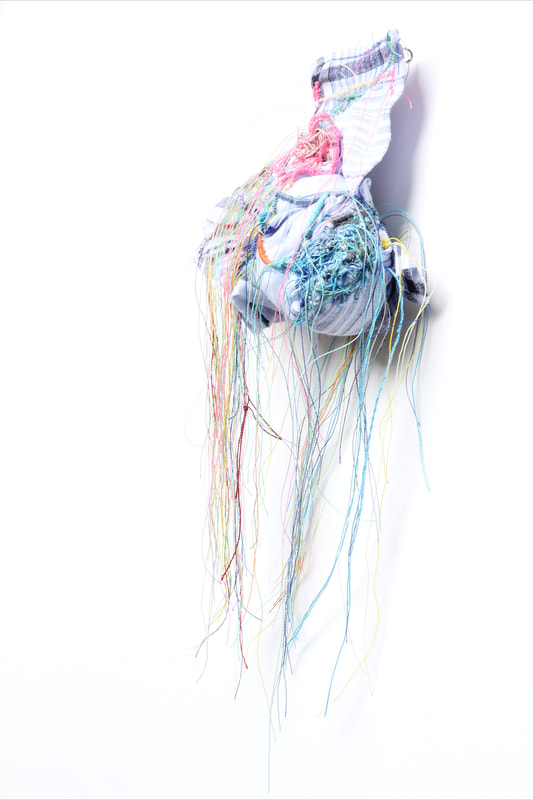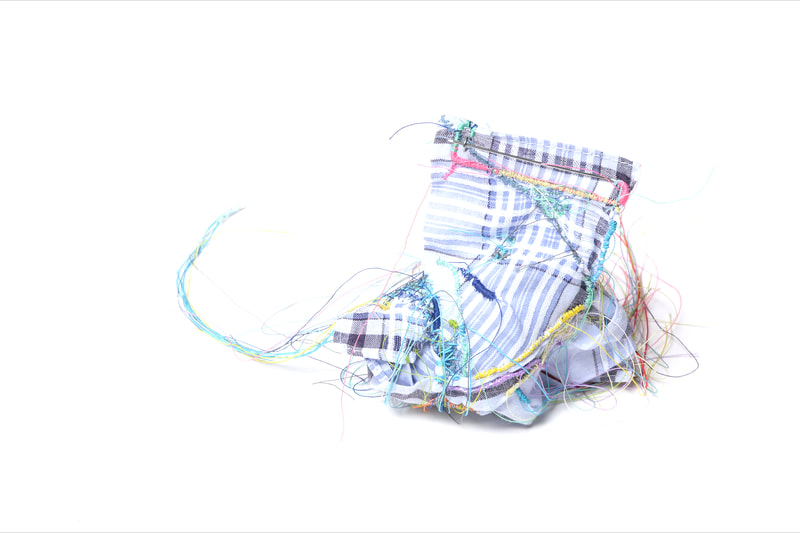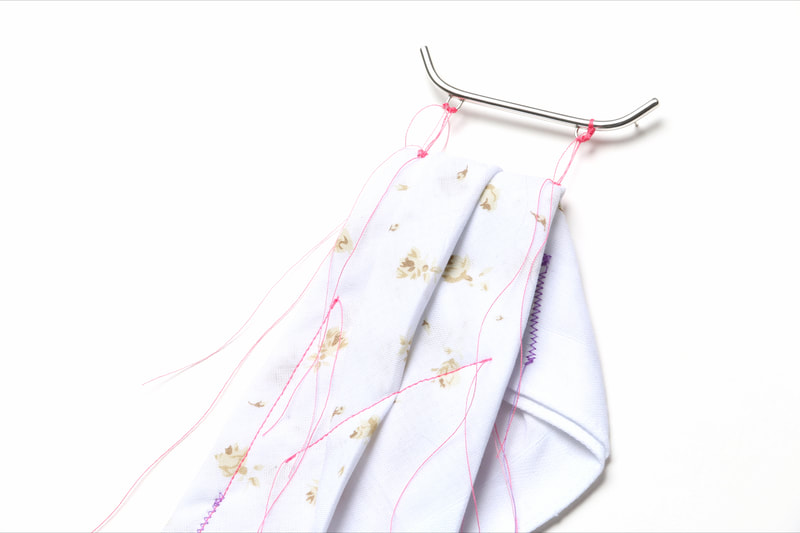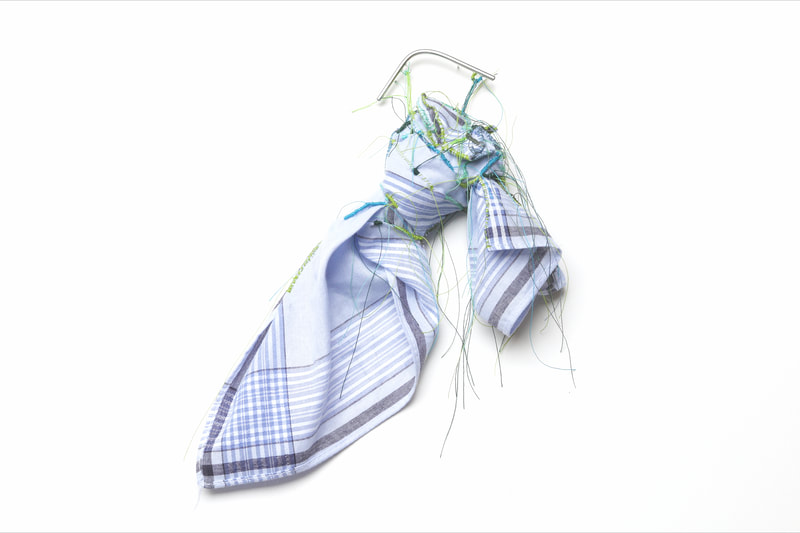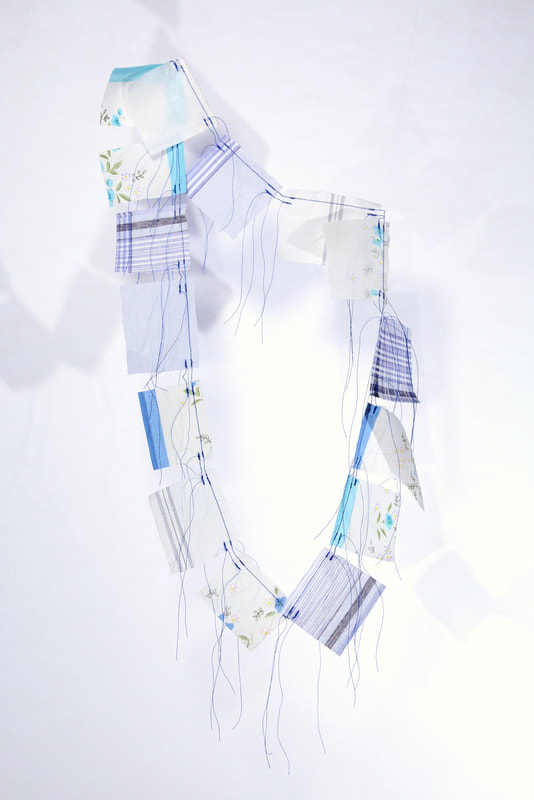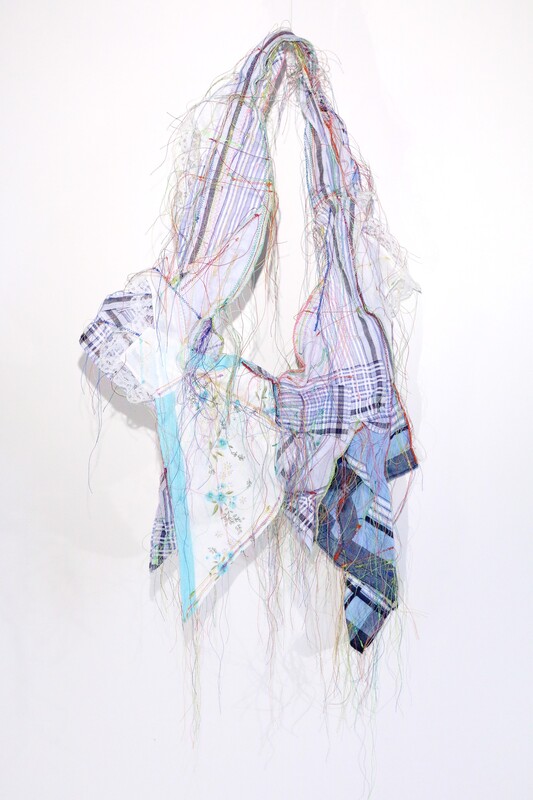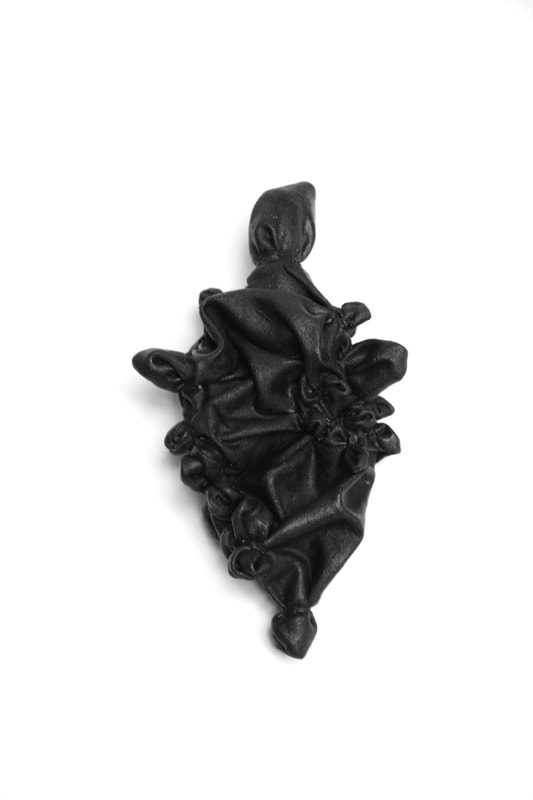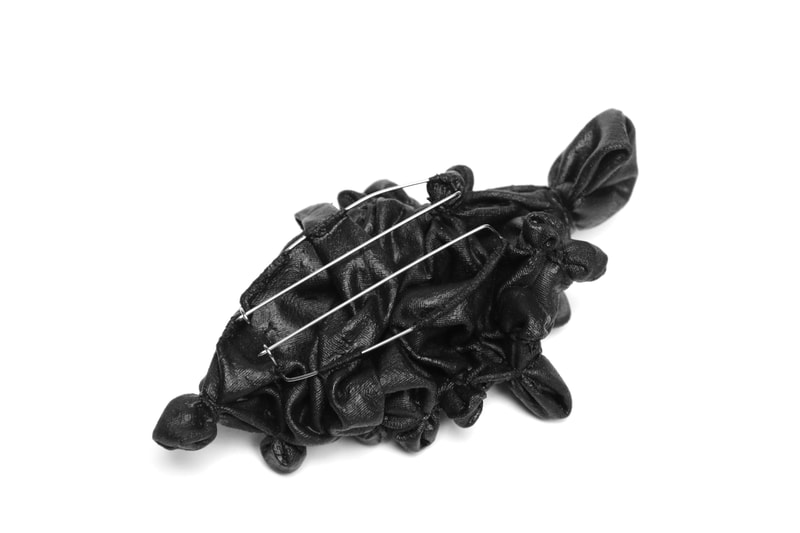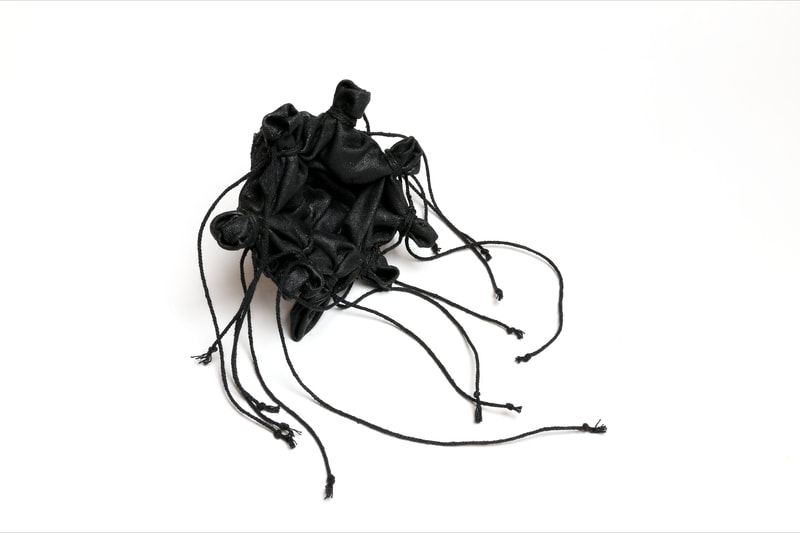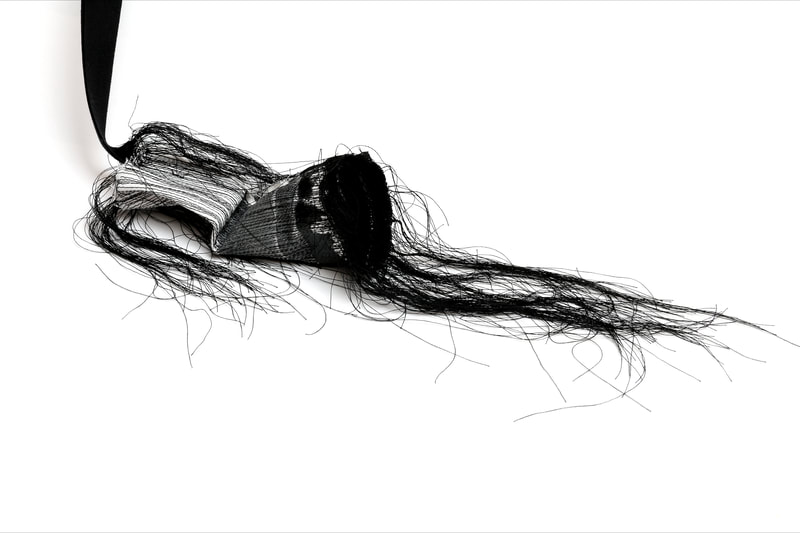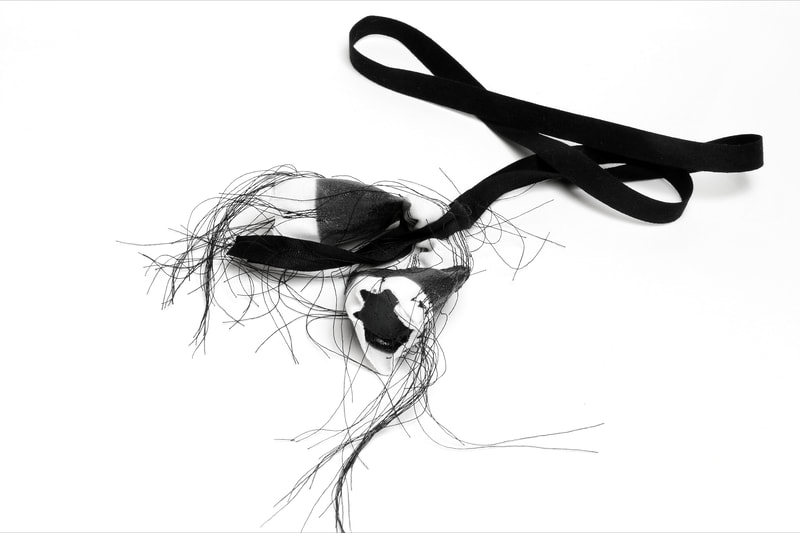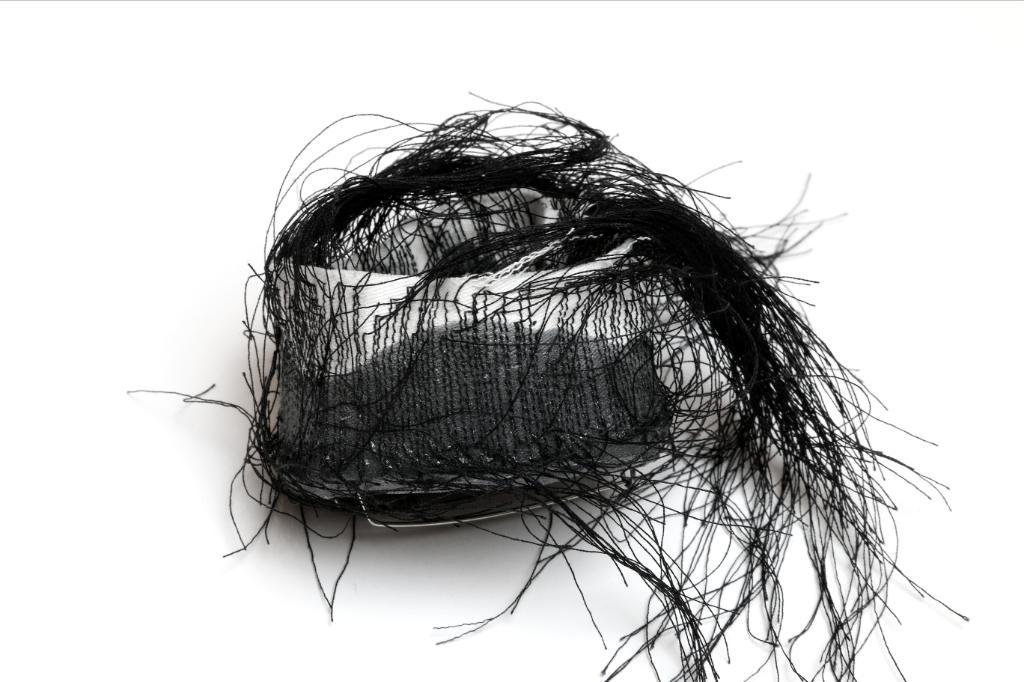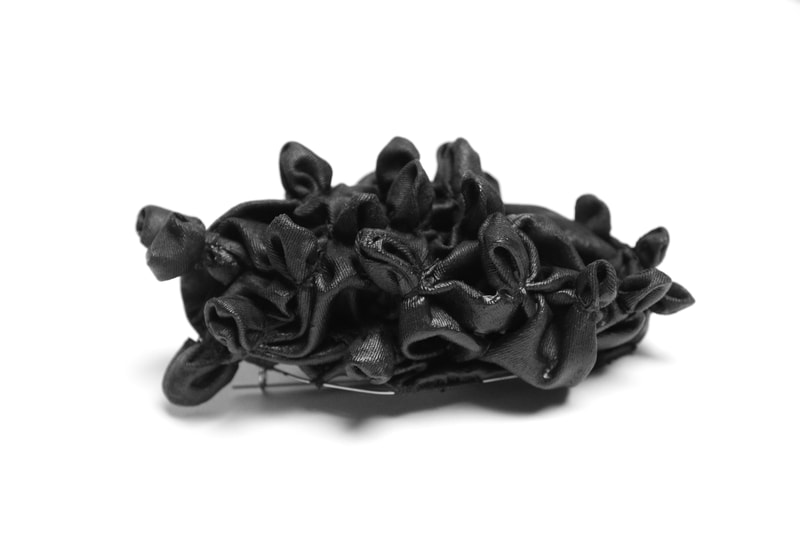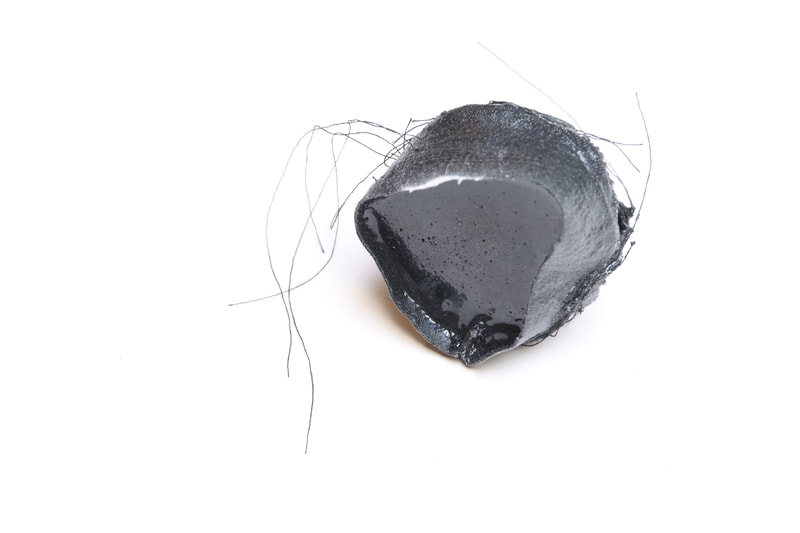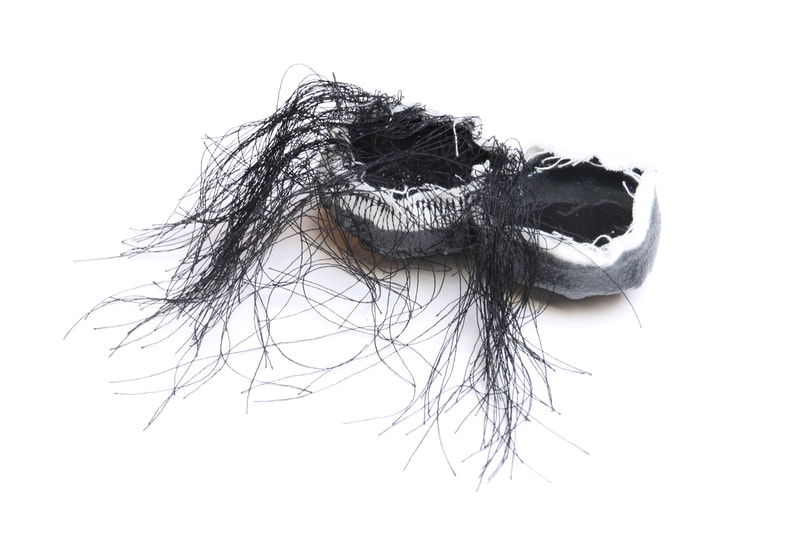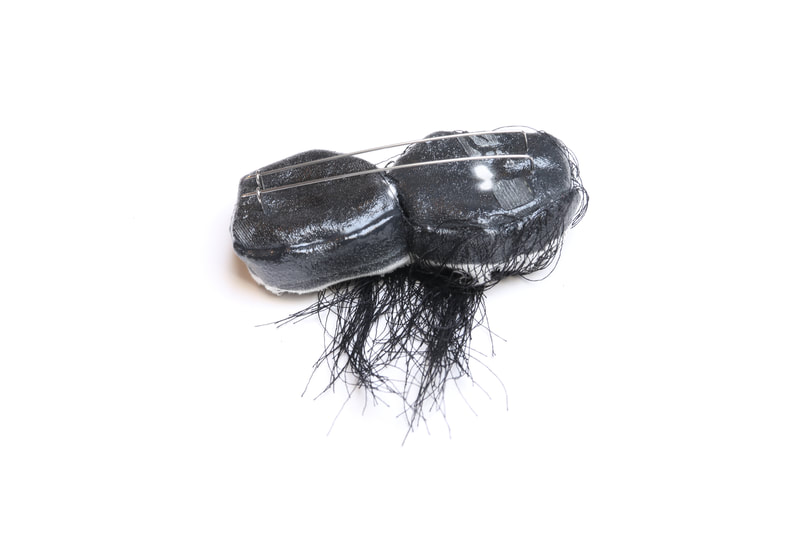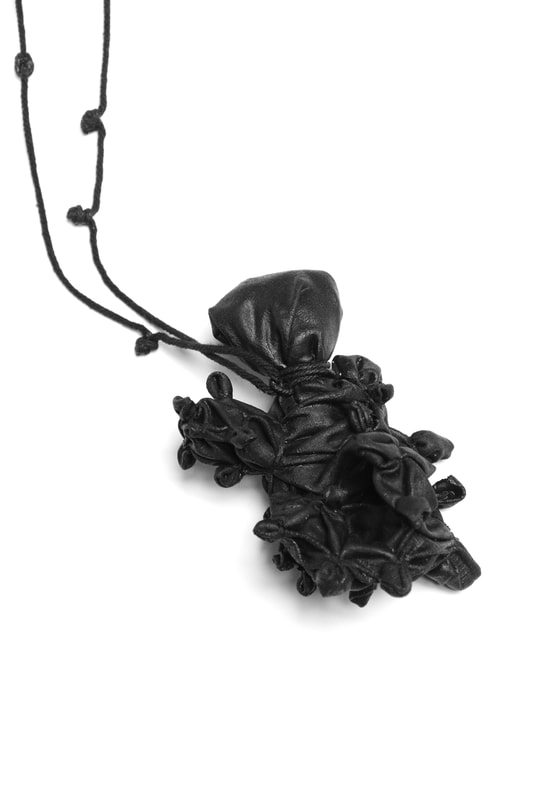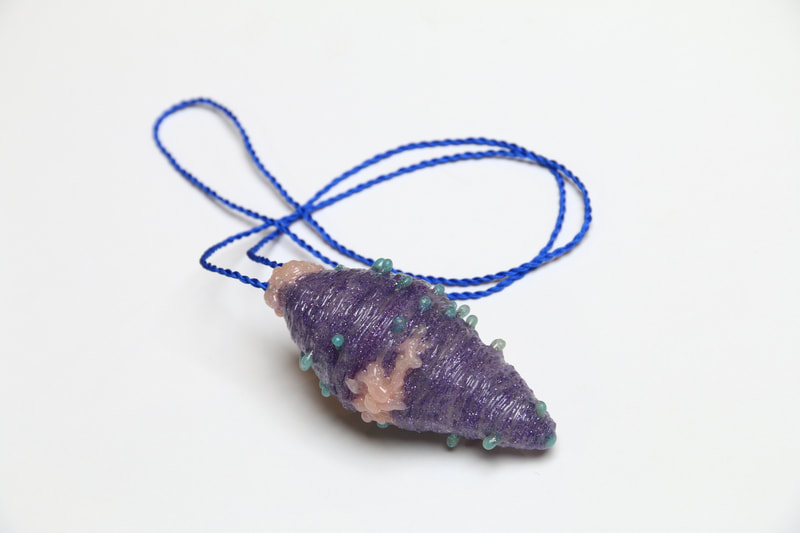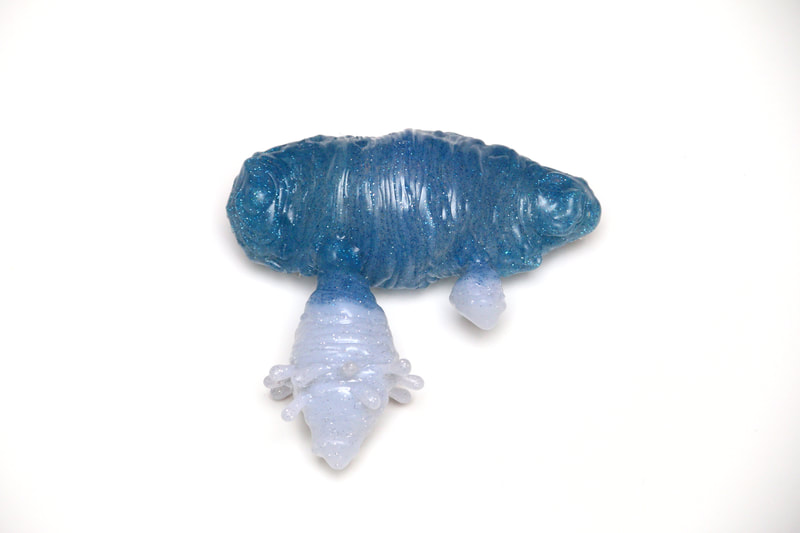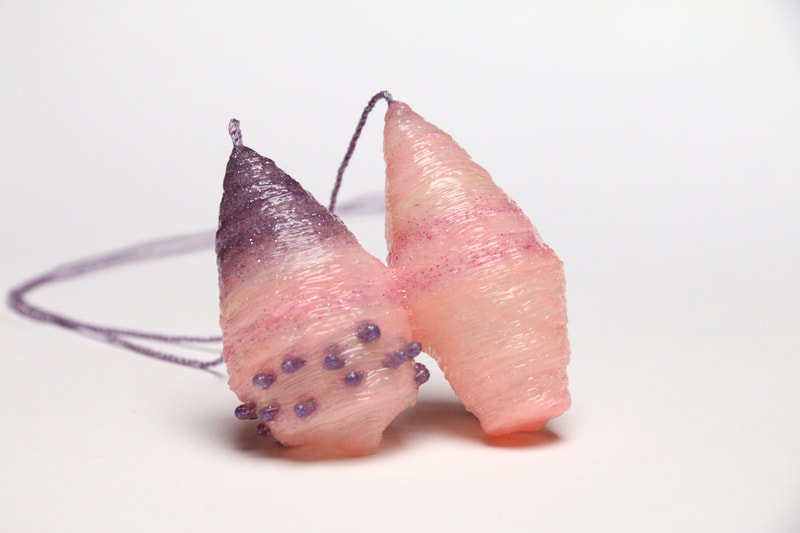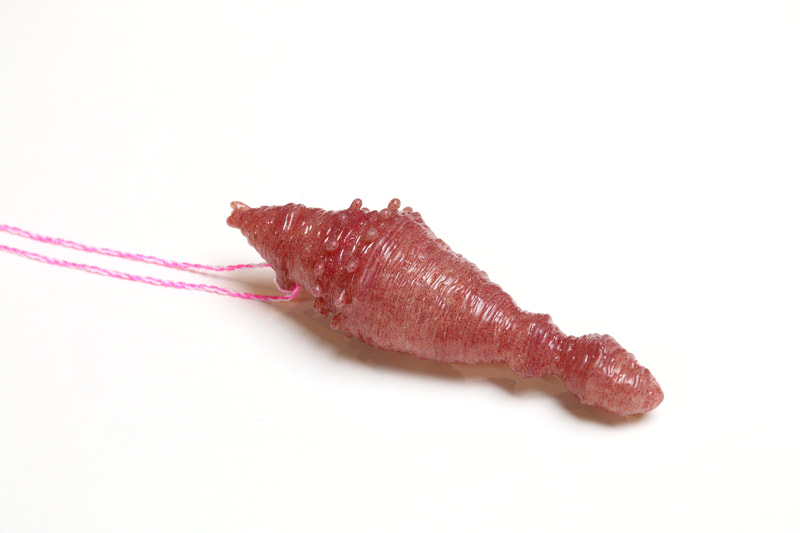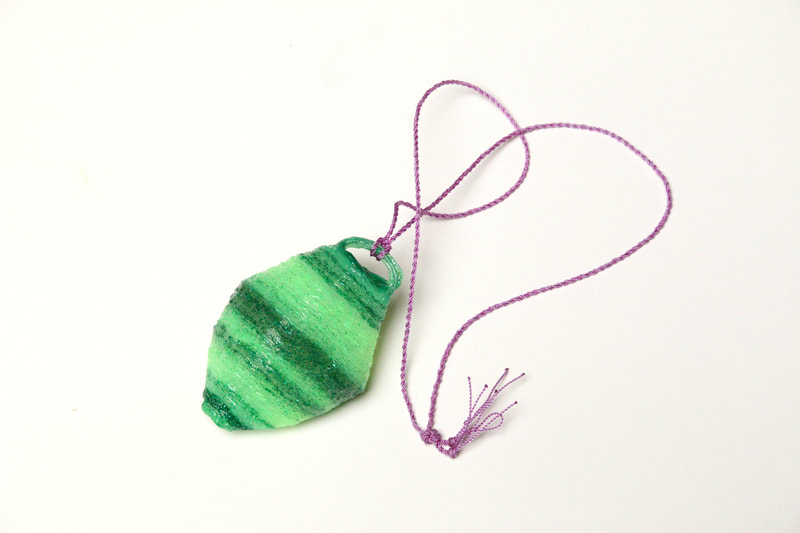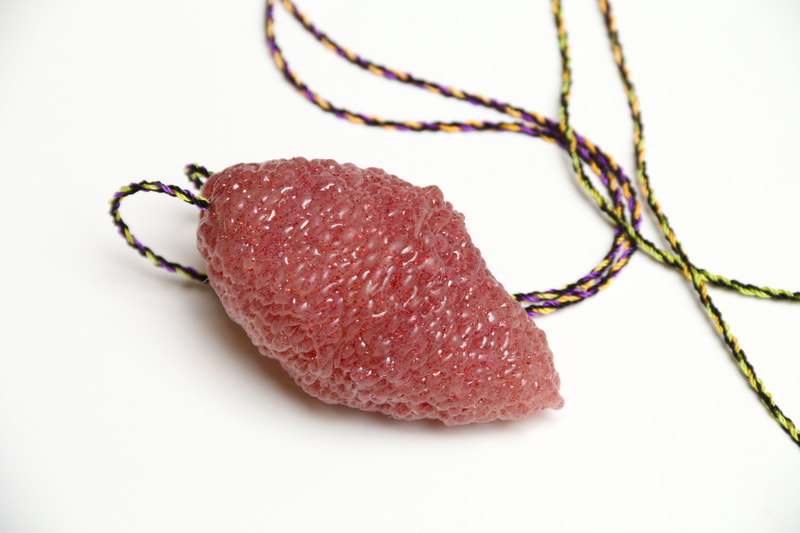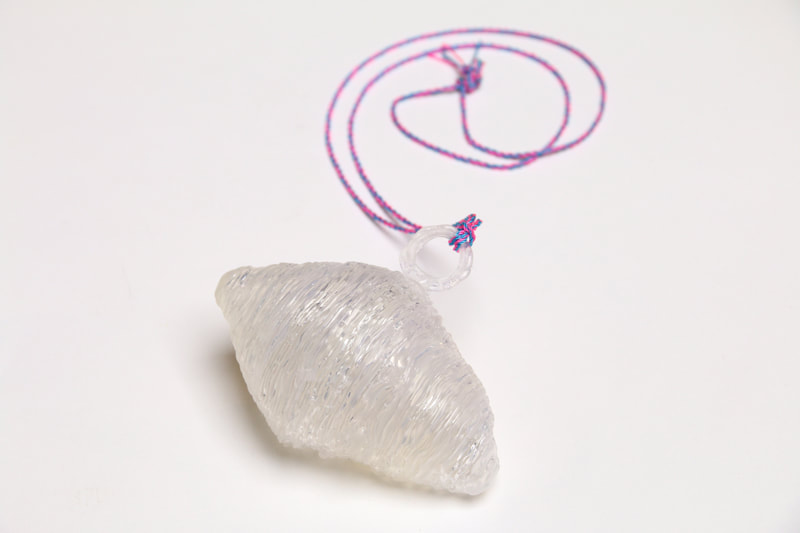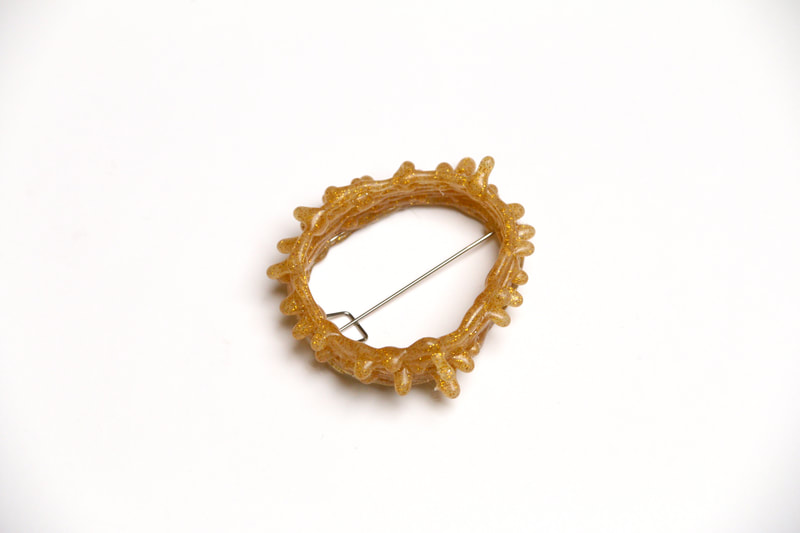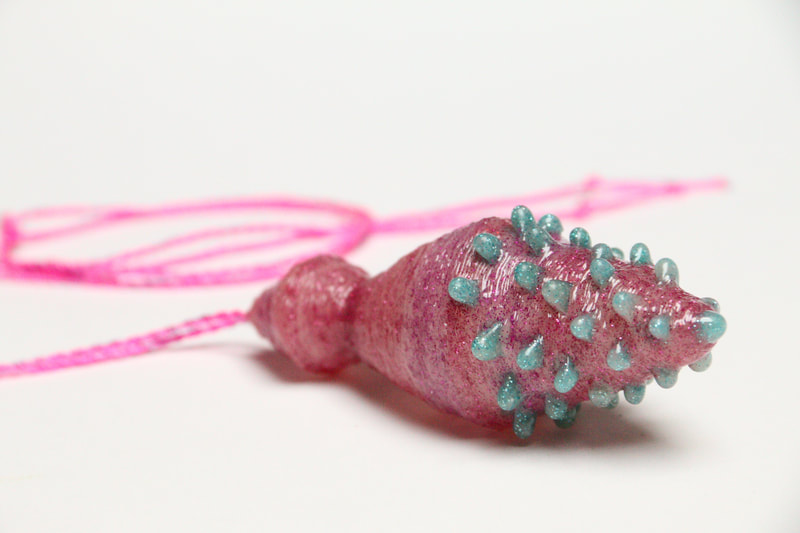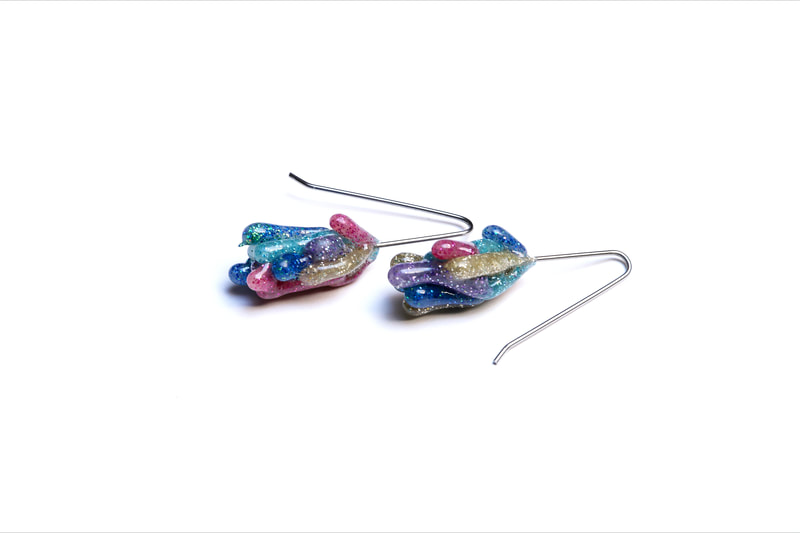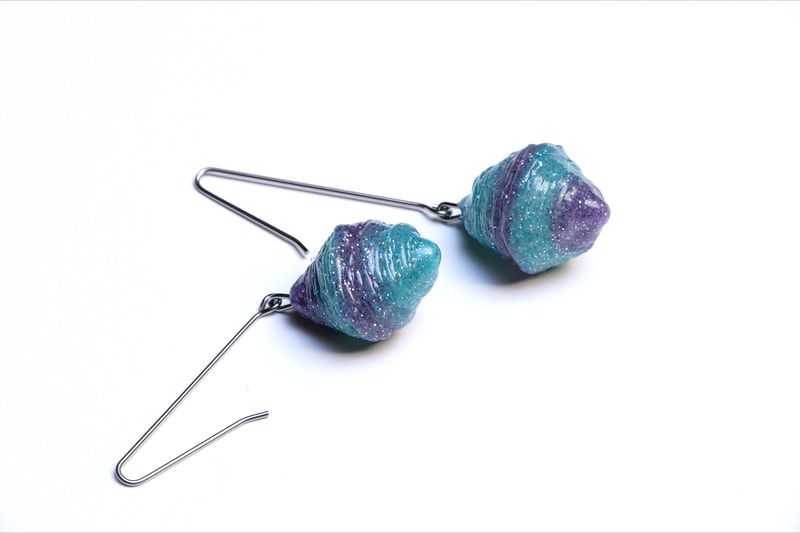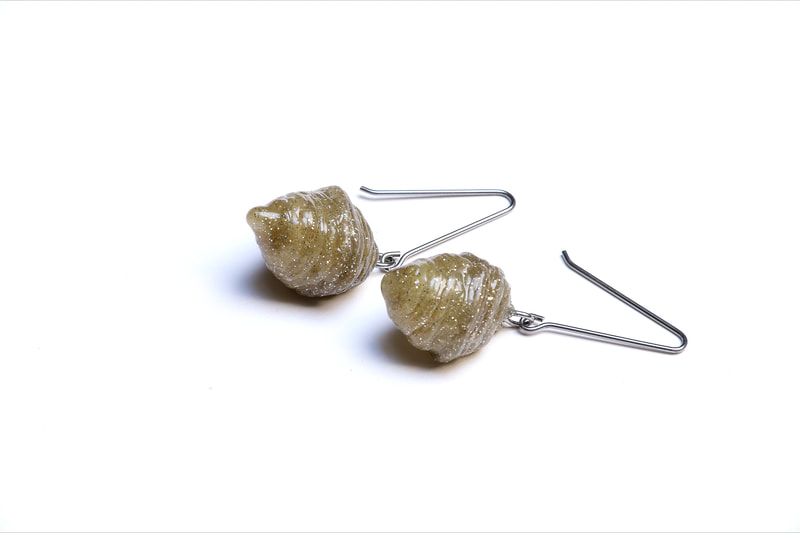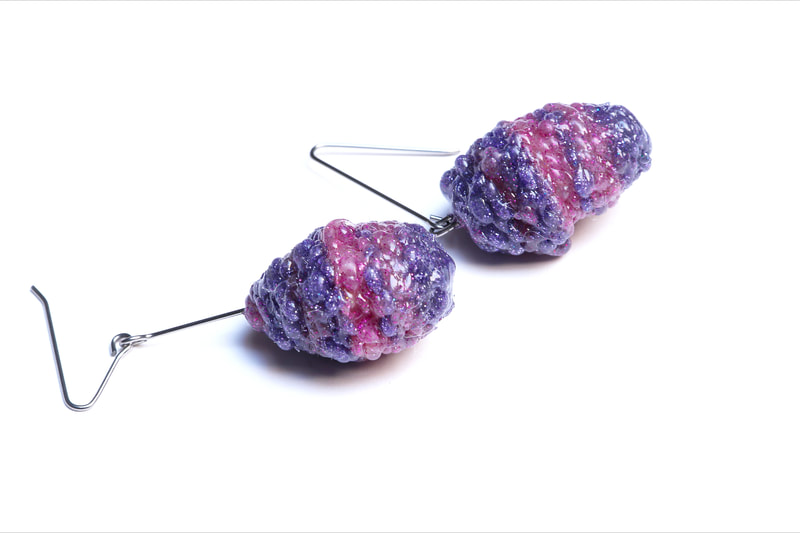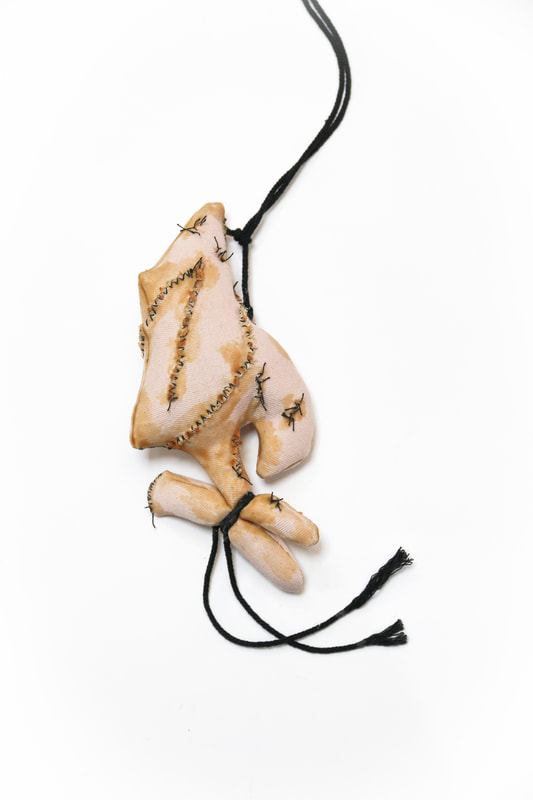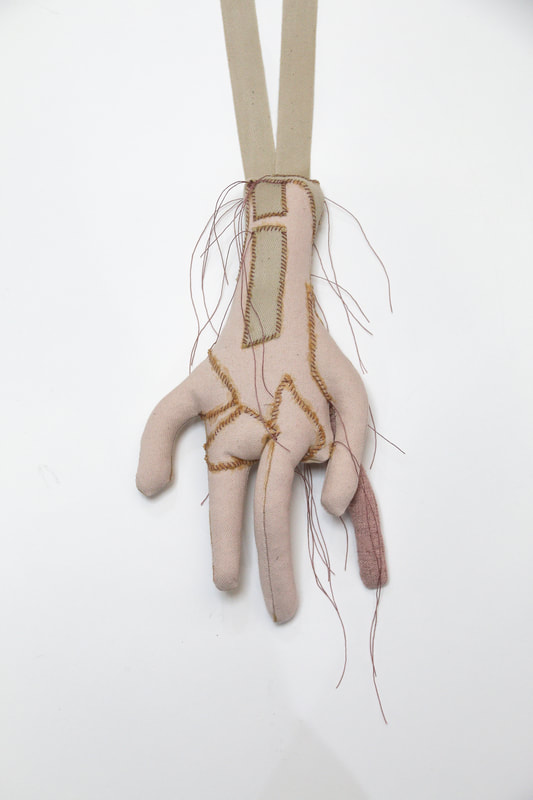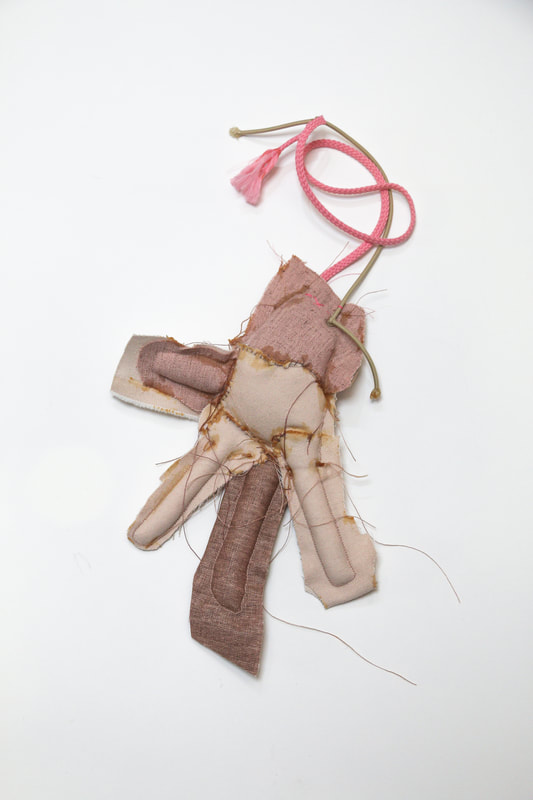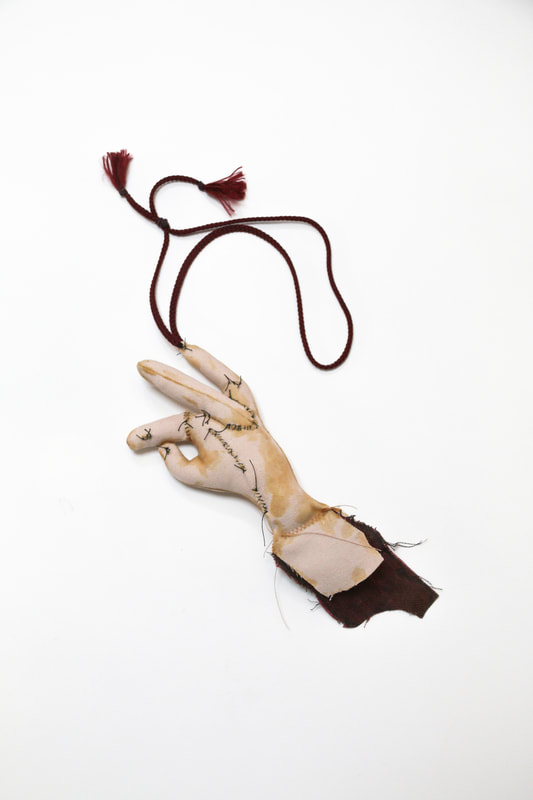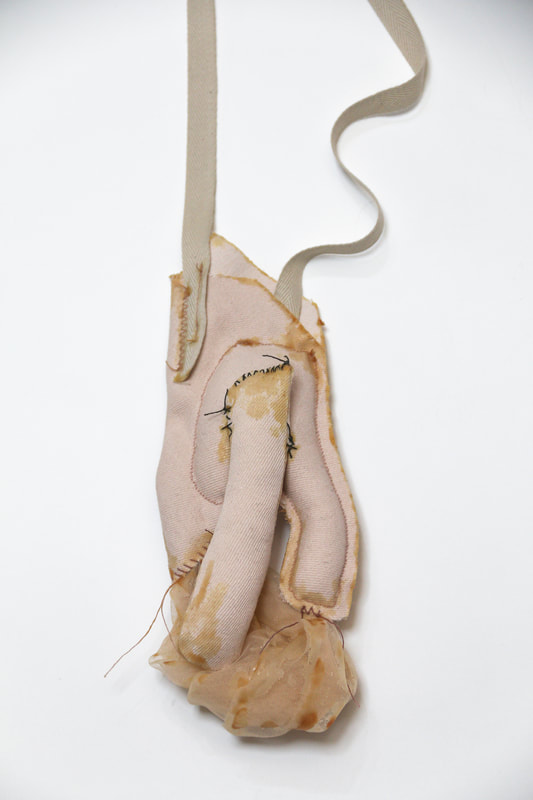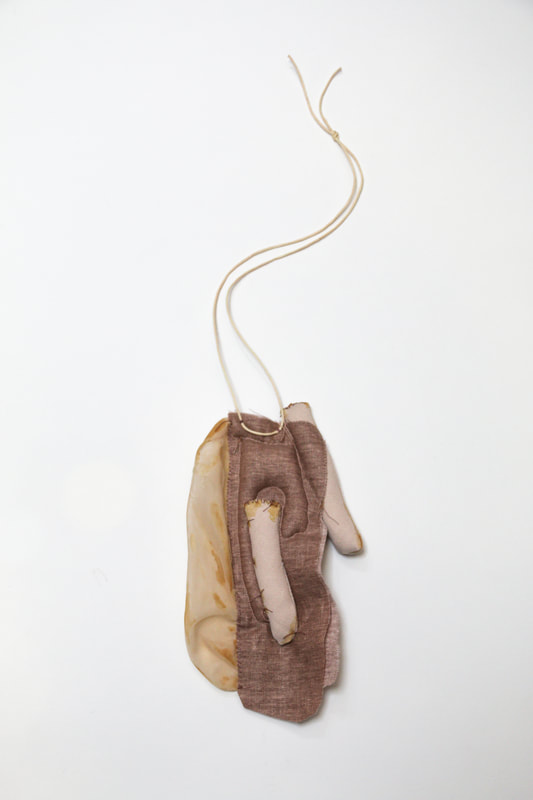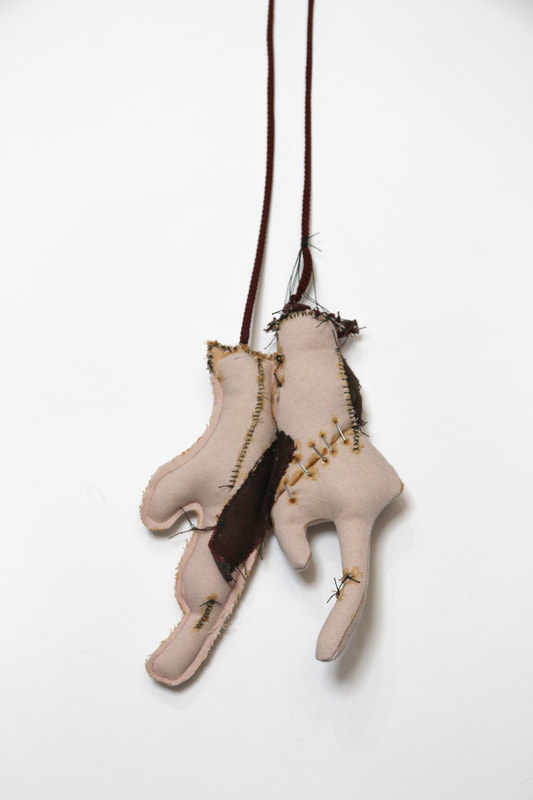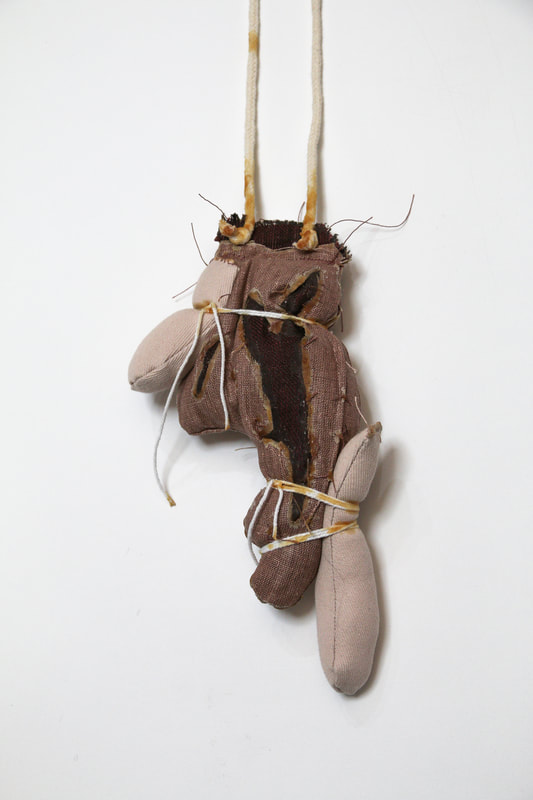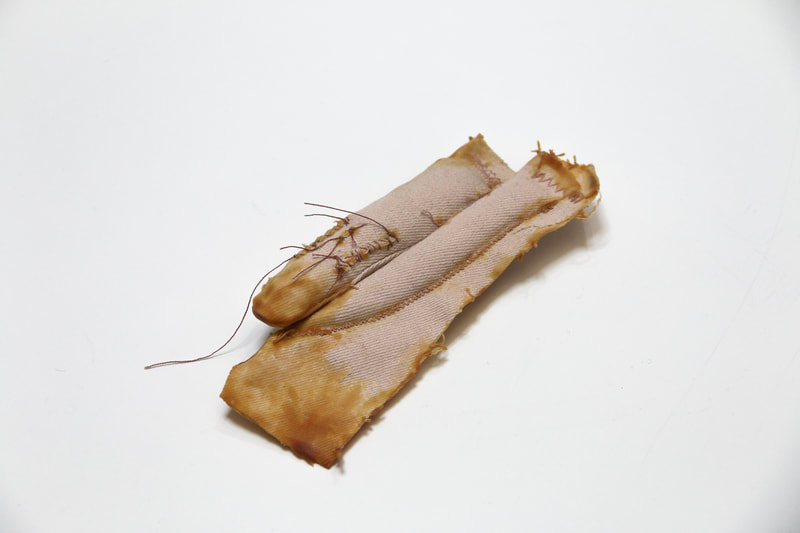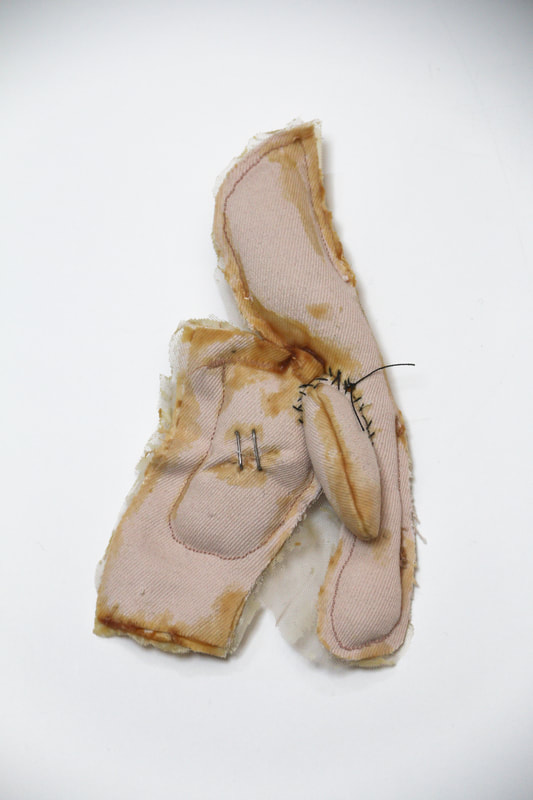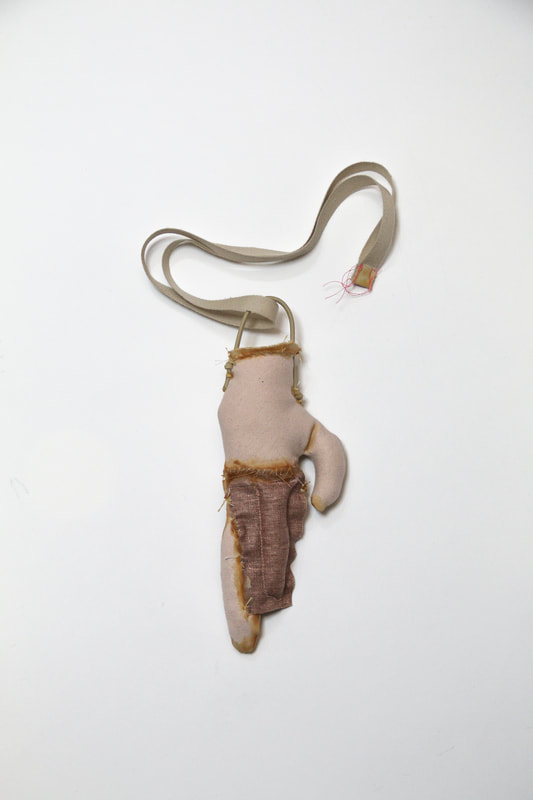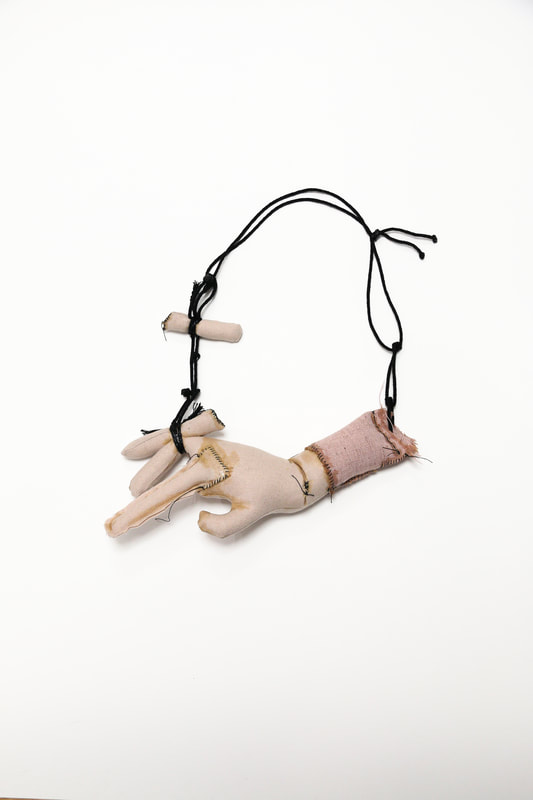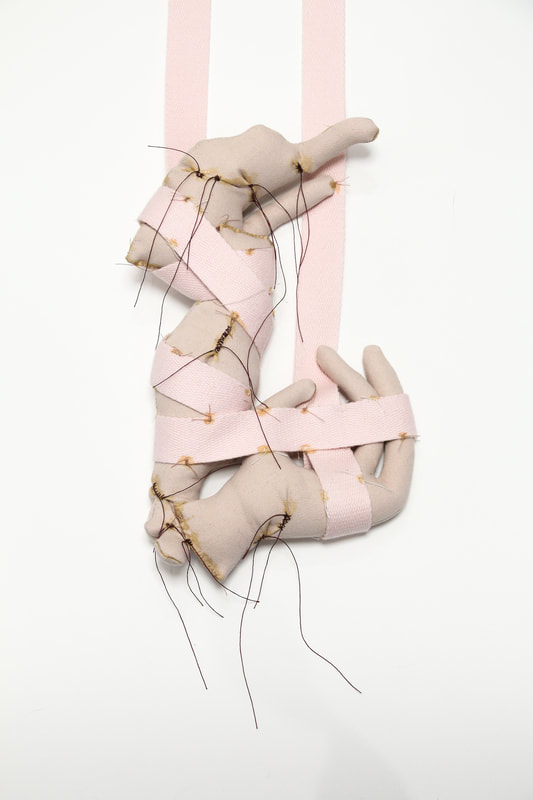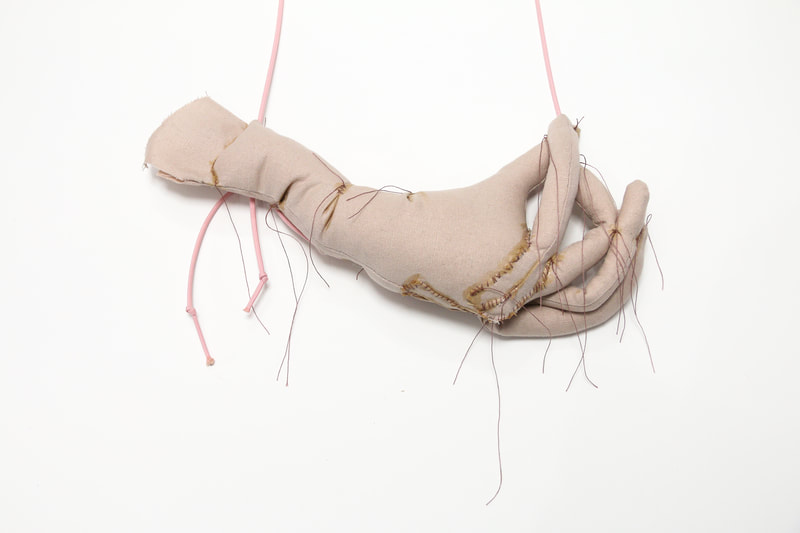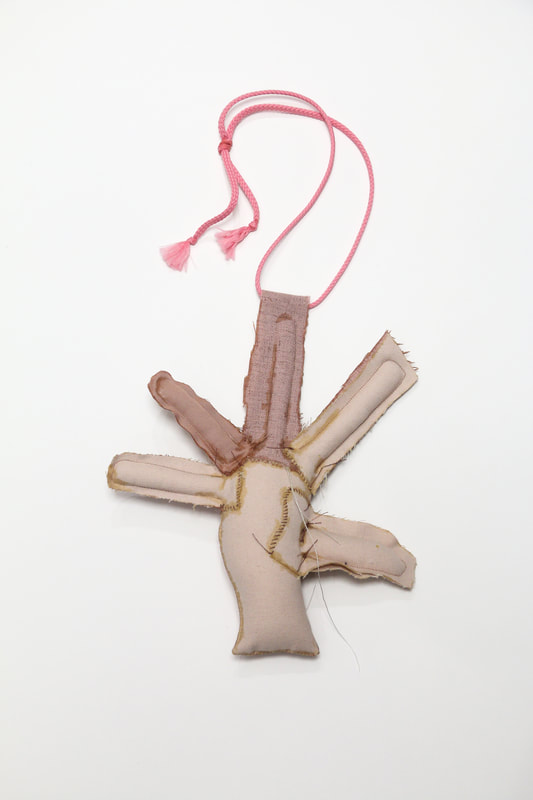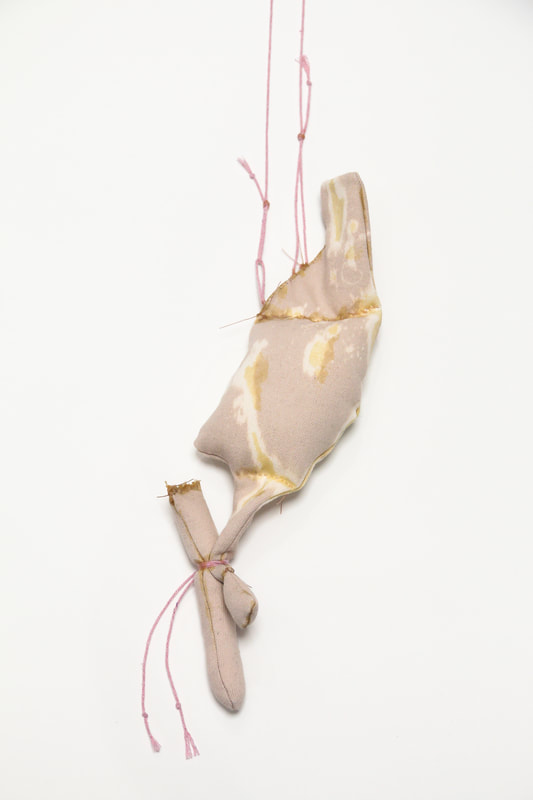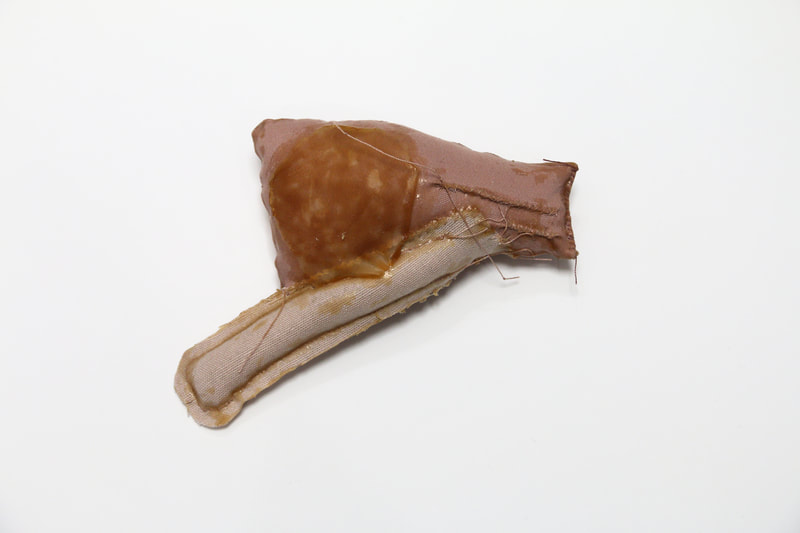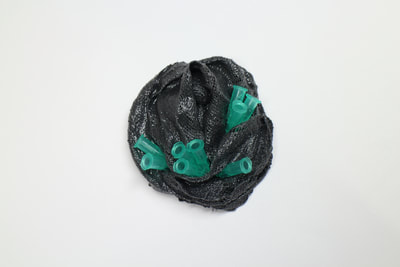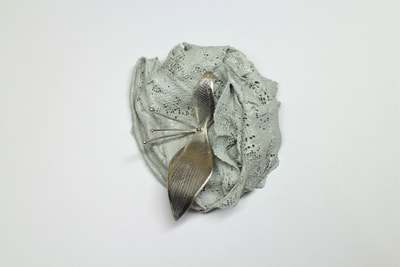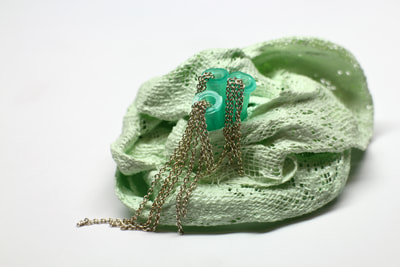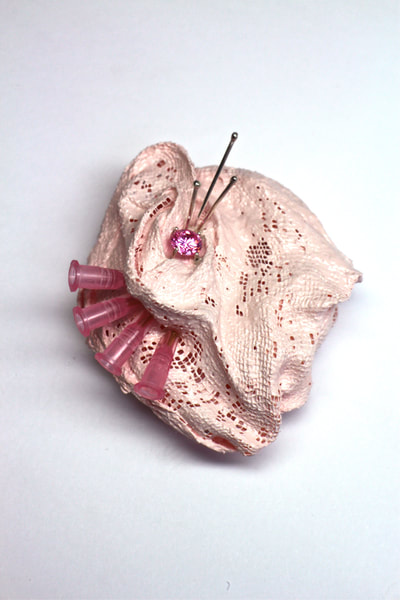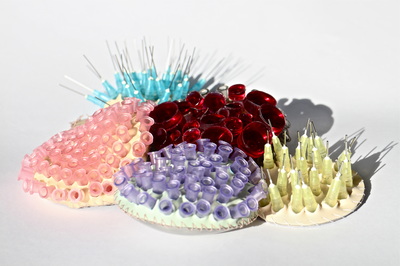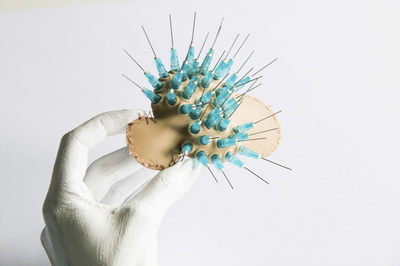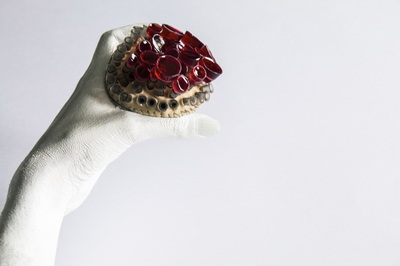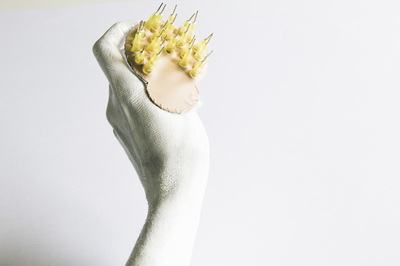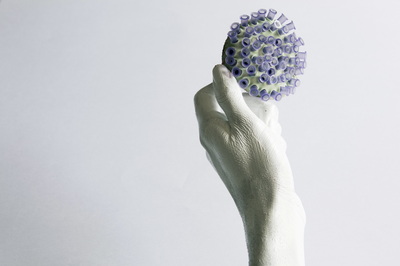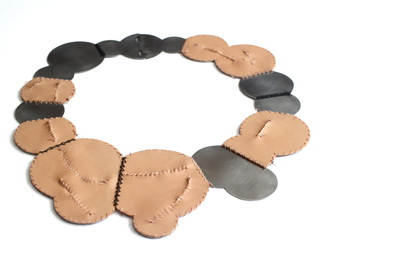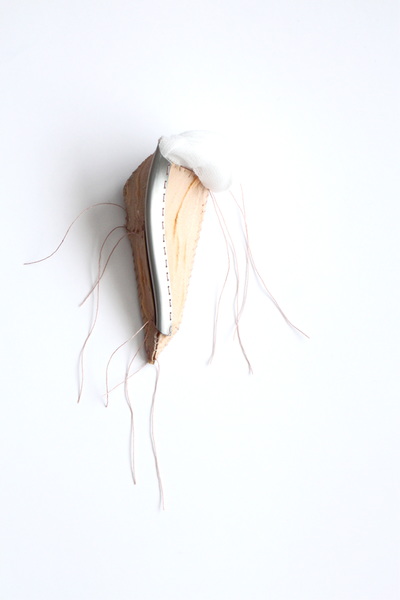Mend 2022-...
As a young child, I always saw my mother ironing or repairing clothes in the evening while we were watching tv together as a family. When I asked if I could help, she’d let me iron the handkerchiefs or sew up the old ones that had holes in them.
Needless to say, this resulted in completely random stitching and ironing…
This small memory reminds me of an intensely warm youth. A while ago, my mom told me she sometimes feels guilty for ‘taking’ me and my siblings away from our birth country by adopting us…
I want these pieces to be a symbol of gratitude, love and acknowledgement for everything my parents gave us, for every chance we got, for letting us be who we really are and for every warm memory.
As a young child, I always saw my mother ironing or repairing clothes in the evening while we were watching tv together as a family. When I asked if I could help, she’d let me iron the handkerchiefs or sew up the old ones that had holes in them.
Needless to say, this resulted in completely random stitching and ironing…
This small memory reminds me of an intensely warm youth. A while ago, my mom told me she sometimes feels guilty for ‘taking’ me and my siblings away from our birth country by adopting us…
I want these pieces to be a symbol of gratitude, love and acknowledgement for everything my parents gave us, for every chance we got, for letting us be who we really are and for every warm memory.
Fray 2022-...
These pieces represent a visualisation of a paralyzing feeling of stress.
There’s a counterproductive contrast between the creative process and the panic that comes with it: having to create, having to succeed, being patient…
Sometimes you lose yourself in all the ideas and thoughts in your head, or the lack thereof.
You don’t know what to do… you’re stuck!
Take a deep breath and channel all these feelings into an object, a piece of jewellery.
Use this chaos to create something beautiful and by doing so, grow mentally.
I shaped the textile by folding, sewing, scrunching and tying it. I let 3D shapes emerge from a flat surface and covered it with pitch-black paint. Some pieces are filled with polyurethane after machine stitching lines on the textile to create a pattern. Other details or are handstitched to insure the stability of the pieces.
I hand shaped a steel brooch system and stitched it onto the piece.
Materials: Cotton, acrylic paint, polyurathane, steel, rope, sewing thread.
These pieces represent a visualisation of a paralyzing feeling of stress.
There’s a counterproductive contrast between the creative process and the panic that comes with it: having to create, having to succeed, being patient…
Sometimes you lose yourself in all the ideas and thoughts in your head, or the lack thereof.
You don’t know what to do… you’re stuck!
Take a deep breath and channel all these feelings into an object, a piece of jewellery.
Use this chaos to create something beautiful and by doing so, grow mentally.
I shaped the textile by folding, sewing, scrunching and tying it. I let 3D shapes emerge from a flat surface and covered it with pitch-black paint. Some pieces are filled with polyurethane after machine stitching lines on the textile to create a pattern. Other details or are handstitched to insure the stability of the pieces.
I hand shaped a steel brooch system and stitched it onto the piece.
Materials: Cotton, acrylic paint, polyurathane, steel, rope, sewing thread.
Glu3d 2020-2022
A glue gun, and in particular the glue itself, is normally used as an way to connect two materials. Most of the time, glue is almost colourless or only has color in function of a particular purpose. Nevertheless, it does exist in more colourful and even sparkeling variations.
At the beginning of the corona outbreak, I wanted to start on a new collection, but it took ages to order materials due to delays because of the lockdown here in Belgium. So I started experimenting and playing with the materials I had lying around, one of which were hot glue sticks. But after using them as an adhesive material I started to notice the way they were dripping and moving and so I got fascinated by the glue as a material on its own.
By adding layer after layer of glue some organic looking shapes started to occur that reminded me of insect hives, birdsnests made out of mud and cocoons. Simultaneously, my own arm, hand and the glue gun reminded me of some kind of 3D-printer, like the ones that are used to ’print’ concrete buildings. This created a fascinating tension between the natural (the organic hive, nest and cocoon shape) and the mechanical (the 3D printing technology).
The pieces have become little cocoons, representing safety. They exist in several colours, that don't necessarily represent something, but are basically the ones I could get my hands on during these exceptional times... These little safehavens can create a feeling of joy to the wearer and even the repetitive way of layering the glue was a soothing process to me.
Materials: Gluegun glue & rope
A glue gun, and in particular the glue itself, is normally used as an way to connect two materials. Most of the time, glue is almost colourless or only has color in function of a particular purpose. Nevertheless, it does exist in more colourful and even sparkeling variations.
At the beginning of the corona outbreak, I wanted to start on a new collection, but it took ages to order materials due to delays because of the lockdown here in Belgium. So I started experimenting and playing with the materials I had lying around, one of which were hot glue sticks. But after using them as an adhesive material I started to notice the way they were dripping and moving and so I got fascinated by the glue as a material on its own.
By adding layer after layer of glue some organic looking shapes started to occur that reminded me of insect hives, birdsnests made out of mud and cocoons. Simultaneously, my own arm, hand and the glue gun reminded me of some kind of 3D-printer, like the ones that are used to ’print’ concrete buildings. This created a fascinating tension between the natural (the organic hive, nest and cocoon shape) and the mechanical (the 3D printing technology).
The pieces have become little cocoons, representing safety. They exist in several colours, that don't necessarily represent something, but are basically the ones I could get my hands on during these exceptional times... These little safehavens can create a feeling of joy to the wearer and even the repetitive way of layering the glue was a soothing process to me.
Materials: Gluegun glue & rope
Extremity 2019-2020
I find hands one of the most beautiful body parts; they are useful and elegant at the same time. But, as a jewellery designer you can get a lot of cuts and bruises when you are working, something I try to avoid as much as possible. It’s also a great fear of mine to lose my hands or at least not being able to use them anymore!
In these pieces I try to repair or at least patch-up these broken hands and put lost parts together to give them a new purpose, an attempt to fight my own fear of damaging my hands. The biggest part of the pieces is hand sown, therefor I need my own hands to repair these broken ones. I use scars, syringes and stitches (things you would like to keep away from your hands) as decorative details.
(textile, latex, steel)
I find hands one of the most beautiful body parts; they are useful and elegant at the same time. But, as a jewellery designer you can get a lot of cuts and bruises when you are working, something I try to avoid as much as possible. It’s also a great fear of mine to lose my hands or at least not being able to use them anymore!
In these pieces I try to repair or at least patch-up these broken hands and put lost parts together to give them a new purpose, an attempt to fight my own fear of damaging my hands. The biggest part of the pieces is hand sown, therefor I need my own hands to repair these broken ones. I use scars, syringes and stitches (things you would like to keep away from your hands) as decorative details.
(textile, latex, steel)
Aesthetical Injection 2016
Designing this collection Juan Harnie used medical materials to create attractive, floral looking jewellery. Juan has always seen beauty in materials that have little to no aesthetical value to others. These materials in particular are usually linked to unpleasant situations like hospitals and doctor visits, but now they are taken out of this context and made into uncanny pieces of jewellery.
Juan got his inspiration from flowers and plants, which always seem to please the eye of the beholder. Even when a plant or flower turns out to be hazardous, poisonous or possibly deadly, at first people will always attribute positive feelings towards seeing them. Contradictory, syringes that are designed to administer medicine and in fact heal people are met with fear, disgust and a general feeling of unease. Using these syringes in colourful, floral pieces of jewellery, mimicking the shape and colour of the ever-so-loved flower, might just make people reconsider their initial feelings towards syringes and see the beauty the designer saw in them.
In addition to the syringes, sterile medical gauze is used either to imprint the silver backs of the pieces or being drenched in coloured polyurethane and moulded into organic sculptured shapes sprouting silverwork and gemstones. This medical gauze once again fulfils its original purpose: being worn on the body and thus soothing an inner ache.
(Syringes, polyurethane, zirconia, brass, silver, gauze, resin)
Pictures By Nele Moens & Juan Harnie
Designing this collection Juan Harnie used medical materials to create attractive, floral looking jewellery. Juan has always seen beauty in materials that have little to no aesthetical value to others. These materials in particular are usually linked to unpleasant situations like hospitals and doctor visits, but now they are taken out of this context and made into uncanny pieces of jewellery.
Juan got his inspiration from flowers and plants, which always seem to please the eye of the beholder. Even when a plant or flower turns out to be hazardous, poisonous or possibly deadly, at first people will always attribute positive feelings towards seeing them. Contradictory, syringes that are designed to administer medicine and in fact heal people are met with fear, disgust and a general feeling of unease. Using these syringes in colourful, floral pieces of jewellery, mimicking the shape and colour of the ever-so-loved flower, might just make people reconsider their initial feelings towards syringes and see the beauty the designer saw in them.
In addition to the syringes, sterile medical gauze is used either to imprint the silver backs of the pieces or being drenched in coloured polyurethane and moulded into organic sculptured shapes sprouting silverwork and gemstones. This medical gauze once again fulfils its original purpose: being worn on the body and thus soothing an inner ache.
(Syringes, polyurethane, zirconia, brass, silver, gauze, resin)
Pictures By Nele Moens & Juan Harnie
Scar(r)ed (2015)
In his project ‘Scar(r)ed’, Juan Harnie investigates how medical materials, deformities and scar tissue can be used in jewellery even though many people associate them with negative experiences and fear. As an outcome of this research he created a collection of brooches and necklaces made of latex and a variety of medical materials such as syringes, gauze and stainless steel basins. This unusual choice of materials and the technique of surgical stitching creates very decorative, yet uncanny pieces.
(syringes, latex, stainless steel, resin, medical gauze)
Pictures by Ronny Harnie
